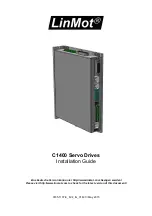
Installation and Connection
CFW-11M G2 | 3-11
3
3.2 ELECTRICAL INSTALLATION
DANGER!
The following information is merely a guide for proper installation. Comply with applicable local
regulations for electrical installations.
DANGER!
Les informations suivantes constituent uniquement un guide pour une installation correcte. Respectez
les réglementations locales en vigueur pour les installations électriques.
DANGER!
Make sure the AC power supply is disconnected before starting the installation.
DANGER!
Vérifiez que l'alimentation secteur CA est débranchée avant de commencer l'installation.
ATTENTION!
The CFW-11M G2 can be connected in circuits with symmetrical short circuit capability up to 100000
A
rms
(480 V/690 V maximum).
ATTENTION!
Integral solid state short circuit protection does not provide branch circuit protection. Branch circuit
protection must be provided in accordance with applicable local codes.
3.2.1 Input Rectifier
It is necessary to use a rectifier to generate DC voltage for the power supply of the UP11 G2. The rectifier may be
an Active Front End (AFE) or a diode bridge rectifier with 6, 12, 18 pulses or more.
The following items contain general directions on the sizing of a 6-pulse rectifier. For further information on multipulse
rectifiers or AFE solution, contact WEG.
3.2.1.1 Sizing
The main rectifier bridge is selected to comply with the nominal power of the drive. The heat dissipation caused
by losses at the rectifier bridge should be taken into account for the sizing of the heatsink, as well as in the heating
up of the panel internal air.
ATTENTION!
The diodes reverse voltage must be ≥ 2200 V.
3.2.1.2 Line Reactor
The diode rectifier plus the capacitor bank of the UP11 G2 drain from the electric grid a current with non-sinusoidal
wave shape containing harmonics of the fundamental frequency. Those harmonic currents flowing on the
impedances of the power supply line cause harmonic voltage drops, distorting the supply voltage of the inverter
itself and other loads connected to this line. These harmonic current and voltage distortions may increase the
electrical losses in the installation, overheating components (cables, transformers, capacitor banks, motors, etc.),
as well as a lowering power factor.
















































